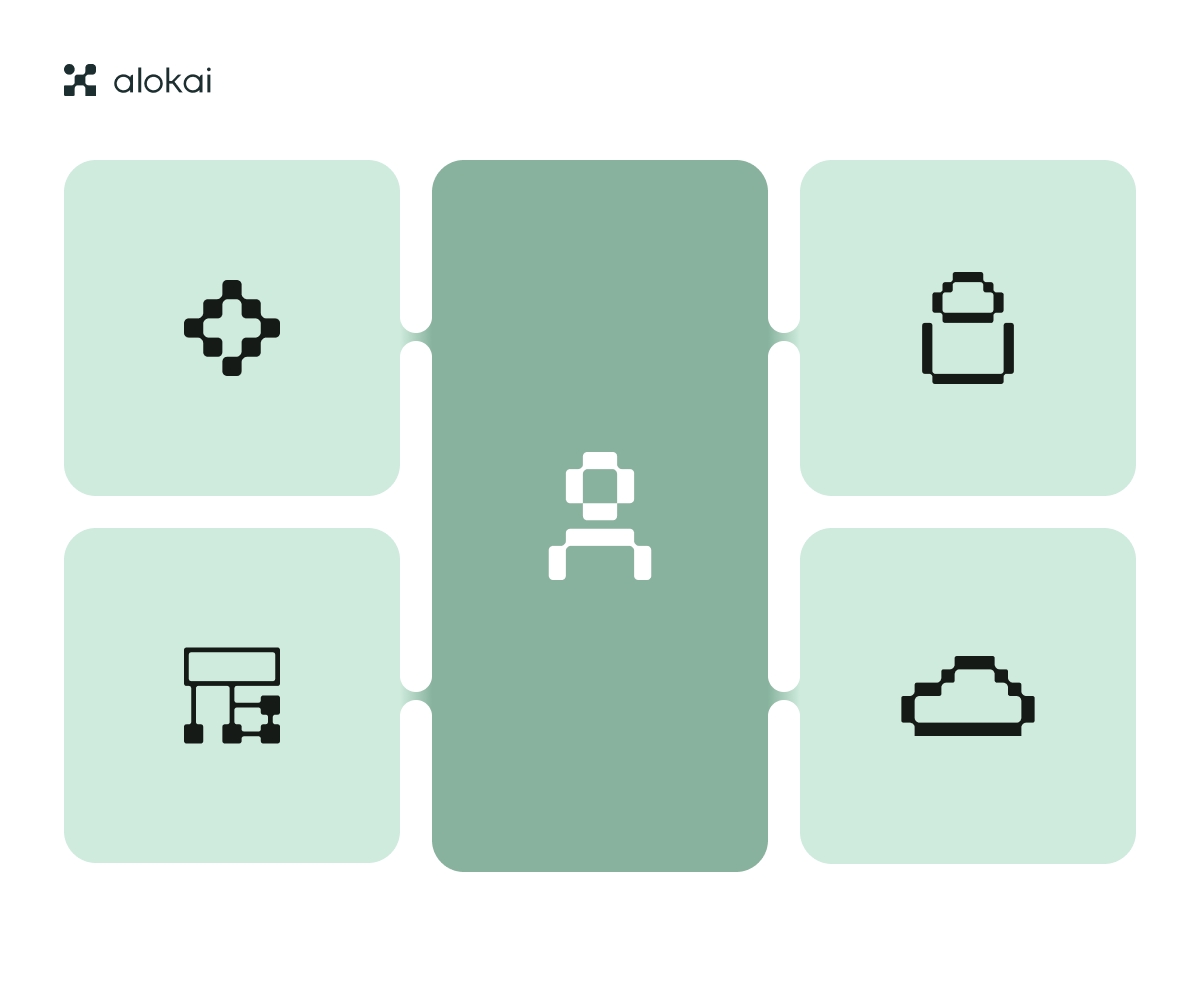What is the MACH Alliance, and how is it transforming the digital commerce landscape? This consortium redefines how businesses build, integrate, and scale their e-commerce platforms by focusing on Microservices, API-first, Cloud-native, and Headless design. Learn why companies adopt these principles to create superior customer experiences and drive innovation.
Key Takeaways
- The MACH Alliance, founded in June 2020, advocates for a modern technology framework in eCommerce, characterized by Microservices, API-first, Cloud-native, and Headless design principles, enhancing customer experience and business performance.
- Adopting MACH principles offers businesses agility, seamless omnichannel customer experiences, flexible and scalable infrastructure, and a faster time-to-market for digital products, as evidenced by success stories from companies like LEGO, River Island, and Foodl.
- While beneficial, transitioning to MACH architecture presents challenges such as talent acquisition and change management, which can be navigated through strategic approaches such as phased migration, replatforming, and best practices emphasizing planning and regular system maintenance.
Understanding the MACH Alliance

In eCommerce, the MACH Alliance is a beacon of progress, leading the way with modern technology principles that have set a new industry standard. These principles, encapsulated in the acronym MACH, stand for:
- Microservices
- API-first
- Cloud-native
- Headless
Each principle shapes a unique aspect of the MACH technology approach, from promoting loose coupling of separate components to fostering composability.
The core mission of the MACH Alliance is to empower eCommerce businesses with the necessary expertise and insights to adopt these modern technologies successfully. They aim to enhance customer experience and overall business performance.
The Formation of the MACH Alliance
The MACH Alliance was conceived in June 2020 through the collaborative efforts of four trailblazing companies: Contentstack, Commercetools, EPAM Systems, and Valtech. Ten additional inaugural members, including Algolia, Amplience, Cloudinary, and Vue Storefront, supported the alliance's birth.
From its inception, the Alliance had a clear purpose: to advocate for open technology ecosystems globally within the information technology industry. Since its formation, the MACH Alliance has experienced rapid growth, expanding to include over 100 members across three continents as of December 2023. This expansion is a testament to the growing recognition and adoption of MACH principles in the global IT industry.
MACH Certification Standards
Achieving MACH certification is a significant accomplishment. The MACH Alliance enforces stringent certification standards to ensure that organizations offer MACH-certified services, completely aligned with the philosophies underpinning MACH technology. The certification process is comprehensive and includes the following steps:
- Initial screening
- Criteria scoring
- Technical review for full compliance
- Approval by the Executive Board
These standards are not just a formality. They maintain the integrity of the MACH Alliance and its mission, ensuring that vendors uphold the ideals of MACH technology in their products and services. The standards also promote fair competition within the Alliance, with the Admissions Panel reviewing applications without direct competition with applicants.
In essence, MACH certification ensures that we embrace mach philosophies and always uphold the spirit of MACH philosophies.
Advantages of Implementing MACH Principles
The adoption of MACH principles brings a host of advantages, transforming the way businesses operate in the digital commerce arena. From enabling agile development to enhancing the customer experience and offering scalability, MACH principles equip businesses with tools to adapt and thrive.
These benefits extend beyond the theoretical. They carry practical implications that can markedly enhance business performance. Whether it’s the ability to easily add functionality, resolve sluggish web experiences, or reduce DevOps costs and maintenance burdens through automatic upgrades, MACH principles offer tangible benefits that can lead to cost savings and improved efficiency.
Enhanced Customer Experience
The customer is central to the MACH architecture. Thanks to MACH principles, businesses can create personalized omnichannel experiences that meet changing customer expectations. This means that customers can enjoy a seamless, cohesive experience across different channels, enhancing their engagement with the brand.
Moreover, the MACH architecture supports creating unique, tailored systems that can easily adapt to specific business needs. This flexibility enables businesses to innovate and deliver a superior customer experience, using MACH principles to streamline the customer journey and reduce friction at every touchpoint.
Agile Development and Faster Time-to-Market
In the swiftly moving digital world, MACH architecture, which exemplifies agility and speed, facilitates quicker and more dependable application development and deployment. This reduces time-to-market, a critical factor in staying competitive and meeting customer expectations.
Moreover, MACH architecture facilitates seamless updates through continuous delivery, ensuring businesses can maintain uninterrupted operation during upgrades. This approach, coupled with the priority placed on agile development and the benefits of headless architecture, ensures that businesses can rapidly bring their minimum viable products to the marketplace. Headless architecture decouples the front-end and back-end systems, allowing for greater flexibility and scalability.
Scalability and Flexibility
MACH architecture is inherently scalable and flexible, making it an ideal choice for cloud-native SaaS solutions. Auto-scaling features elegantly manage traffic surges, ensuring smooth operation even during high-demand periods. Furthermore, multi-tenant capabilities offer scalable software services, allowing businesses to serve various customers while individualizing data, configurations, and upgrades.
MACH architecture also stands out for its adaptability. Its modular approach allows businesses to modify and expand their systems to meet dynamic market demands without necessitating full-system overhauls. This flexibility, combined with seamless automatic updates and the distributed nature of microservices, ensures robust, up-to-date platforms that minimize the impact of system failures.
Real-World MACH Success Stories
The transformative power of MACH principles extends beyond theory and has been proven in real-world circumstances. Companies like LEGO, River Island, and PUMA have leveraged MACH technology to revolutionize their digital commerce platforms, demonstrating the practical benefits of implementing MACH principles. These success stories serve as a compelling testament to the potential of MACH technology.
For instance, LEGO addressed scalability and reliability issues by shifting to a MACH-based digital infrastructure. This transition enabled them to process a heightened volume of online transactions and granted their development team the agility to experiment with new channels and ideas faster.
Similarly, River Island leveraged MACH architecture to take control of innovation and personalize content, leading to revenue-uplifting and improved omnichannel experiences.
Case Study: Foodl
.png?width=768&auto=webp&format=pjpg&disable=upscale&quality=100&dpr=2)
One company that has harnessed the power of mach technologies, specifically MACH technology, is Foodl. Faced with lacking a human touch in its digital services, Foodl sought a flexible solution to support the company’s growth.
The solution presented itself as Vue Storefront, a MACH-based solution that delivered speed, flexibility, and the ability to tailor technology to their business needs. This implementation addressed Foodl’s challenges and enhanced user experience, demonstrating the transformative potential of MACH technology and the benefits of composable commerce through headless commerce.
Case Study: White Stuff

White Stuff, a sustainable fashion brand, has significantly benefited from adopting MACH principles. By partnering with Alokai, White Stuff was able to save months of development time and double its website speed. This digital transformation aimed to provide a top-notch shopping experience crucial for a fashion brand.
The results were impressive: an 85% increase in site speed, a 100% increase in mobile site speed, and a significantly faster time to market. This transformation allowed White Stuff to focus on long-term goals, conduct rapid A/B tests, and improve its SEO performance. The successful implementation of MACH principles has positioned White Stuff as a leader in sustainable fashion, providing exceptional, personalized customer experiences.
Key Players Supporting the MACH Alliance
A diverse range of key players, all lending their expertise and resources, are the driving force behind the success of the MACH Alliance in advancing digital commerce. These members include:
- Independent Software Tech Vendors
- Global System Integrators
- System Integrators
- Enablers
- Supporters
They collaborate to promote MACH principles and facilitate their implementation.
MACH Certified ISVs, for instance, are essential to the ecosystem, offering best-of-breed technology platforms and services to international and enterprise-level customers. Similarly, start-up ISVs within the Alliance represent emerging technology platforms, promoting fresh and innovative contributions to the MACH ecosystem.
Vendor Partnerships
Independently developed vendor partnerships hold a crucial role in the MACH ecosystem. MACH Certified Independent Software Tech Vendors (ISVs) collaborate with various vendors to deliver best-of-breed solutions.
These partnerships enhance the delivery of MACH-certified services, ensuring that businesses benefit from the collective expertise and resources of the MACH ecosystem. Thus, vendor partnerships are instrumental in driving innovation and progress in the MACH Alliance.
System Integrators and Enabler Vendors
Another essential component of the MACH Alliance is the System Integrators and Enabler Vendors. MACH Certified Global System Integrators (GSIs) and System Integrators (SIs) offer comprehensive services in consulting, architecting, and managing modern, composable tech environments.
Enablers, on the other hand, are vital in providing support to the functional areas necessary for effective MACH architecture operation. These key players ensure that MACH architectures function seamlessly through their skills and contributions. Some examples of enablers include:
- API management platforms
- Integration platforms
- Cloud infrastructure providers
- DevOps tools and practices
- Analytics and monitoring tools
These enablers play a crucial role in strengthening the MACH ecosystem.
Overcoming Challenges in Migrating to MACH Architecture
Despite its numerous benefits, migrating to MACH architecture comes with its own set of challenges. From allocating skilled talent to developing change management strategies, businesses face several hurdles in their MACH migration journey.
While these challenges may seem daunting, they can be overcome with the correct mach approach and resources, enabling businesses to transition to MACH architecture successfully. The key lies in understanding these challenges and adopting best practices for a successful transition.
Phased Migration vs. Replatforming
Businesses considering a transition from monolithic to MACH architecture have two main methods to ponder: phased migration and replatforming. Each approach has its advantages and risks.
Replatforming involves developing a new tech stack parallel to the existing one and transferring data to the new storefront before completely replacing the existing platform. This approach can lead to a faster transformation but may involve higher immediate risks and costs.
On the other hand, phased migration allows for a gradual transition, potentially reducing immediate costs but potentially extending the overall transformation timeline, making it a more future-proof approach.
Best Practices for MACH Migration
A well-planned and thoughtful approach is necessary for a successful migration to MACH architecture. Thorough up-front planning, especially for API integrations, is crucial. Learning about potential challenges and adopting a best-of-breed approach can help organizations prepare and avoid issues during MACH implementation.
Implementing MACH principles gradually and using specific automation solutions can reduce the risks of moving to a new, complex infrastructure. Furthermore, regular monitoring and maintenance post-MACH migration are essential to keeping systems updated and fully functional.
Developing robust change management strategies and involving professional consultants can address and ease user adoption issues during the transition to MACH architecture.
Summary
The MACH Alliance and its principles represent a revolutionary force in digital commerce, offering tangible benefits such as enhanced customer experience, agile development, and scalability. Companies like LEGO, River Island, and PUMA showcase its practical benefits. The adoption of MACH principles promises a future-proof path for businesses that are navigating the digital commerce landscape. While challenges exist in transitioning to MACH architecture, they can be overcome with thorough planning, adoption of best practices, and leveraging the collective expertise of the MACH ecosystem.
